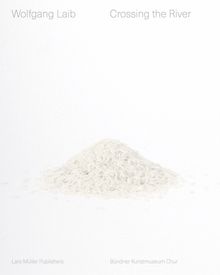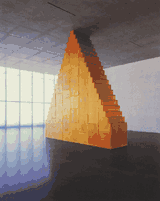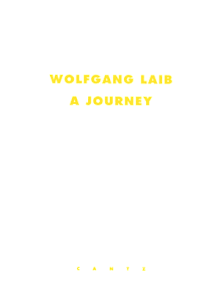| |||||||||||||||||||||||||
ARTIST MONOGRAPHS
|
|
in stock $46.00 Free Shipping UPS GROUND IN THE CONTINENTAL U.S. |
 Wolfgang Laib
Wolfgang Laib
Published by Fondazione Merz.
Text by Klaus Ottmann, Guy Tosatto, Federico Squarcini.
PUBLISHER
Fondazione Merz
BOOK FORMAT
Hardcover, 9.25 x 11.75 in. / 136 pgs / 100 color / 40 bw.
PUBLISHING STATUS
Pub Date 6/30/2010
Out of print
DISTRIBUTION
D.A.P. Exclusive
Catalog: SPRING 2010 p. 125
PRODUCT DETAILS
ISBN 9788877572431 TRADE
List Price: $45.00 CAD $55.00
AVAILABILITY
Not available
STATUS: Out of print | 00/00/00 For assistance locating a copy, please see our list of recommended out of print specialists |
 Wolfgang Laib
Wolfgang Laib
Published by Hatje Cantz.
Essays by Philippe Büttner, Katharina Schmidt and Christoph Vitali. Conversations with Ulf Kster and Harald Szeemann.
PUBLISHER
Hatje Cantz
BOOK FORMAT
Hardcover, 11 x 12.25 in. / 120 pgs / 55 color.
PUBLISHING STATUS
Pub Date 3/1/2006
Out of print
DISTRIBUTION
D.A.P. Exclusive
Catalog: SPRING 2006 p. 107
PRODUCT DETAILS
ISBN 9783775717366 TRADE
List Price: $55.00 CAD $65.00
AVAILABILITY
Not available
STATUS: Out of print | 11/28/2010 For assistance locating a copy, please see our list of recommended out of print specialists |
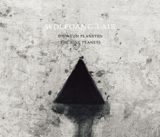 Wolfgang Laib: The Nine Planets - Or How The Interrelationships Also Could Be
Wolfgang Laib: The Nine Planets - Or How The Interrelationships Also Could Be
Published by Hatje Cantz.
Artwork by Wolfgang Laib. Contributions by Necmi Sonmez.
PUBLISHER
Hatje Cantz
BOOK FORMAT
Hardcover, 12 x 10 in. / 144 pgs / 103 duotone
PUBLISHING STATUS
Pub Date 3/2/2003
Out of print
DISTRIBUTION
D.A.P. Exclusive
Catalog: SPRING 2003
PRODUCT DETAILS
ISBN 9783775791151 TRADE
List Price: $35.00 CAD $40.00
AVAILABILITY
Not available
STATUS: Out of print | 6/1/2005 For assistance locating a copy, please see our list of recommended out of print specialists |
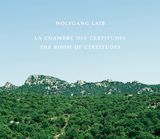 Wolfgang Laib: The Room Of Certitudes
Wolfgang Laib: The Room Of Certitudes
Published by Hatje Cantz.
Essay by Guy Tosatto.
PUBLISHER
Hatje Cantz
BOOK FORMAT
Hardcover, 11.5 x 9.75 in. / 84 pgs / 5 color / 35 bw
PUBLISHING STATUS
Pub Date 2/2/2002
Out of print
DISTRIBUTION
D.A.P. Exclusive
Catalog: SPRING 2002
PRODUCT DETAILS
ISBN 9783775790956 TRADE
List Price: $24.95 CAD $27.50
AVAILABILITY
Not available
STATUS: Out of print | 12/19/2005 For assistance locating a copy, please see our list of recommended out of print specialists |
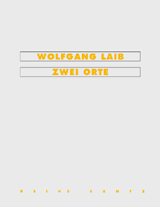 Wolfgang Laib: Two Locations
Wolfgang Laib: Two Locations
Published by Hatje Cantz.
Edited by Ulrich Krempel.
PUBLISHER
Hatje Cantz
BOOK FORMAT
Paperback, 6.25 x 8 in. / 56 pgs / 9 color / 9 bw
PUBLISHING STATUS
Pub Date 2/2/2001
Out of print
DISTRIBUTION
D.A.P. Exclusive
Catalog: SPRING 2001
PRODUCT DETAILS
ISBN 9783775790239 TRADE
List Price: $16.95 CAD $20.00
AVAILABILITY
Not available
STATUS: Out of print | 6/1/2005 For assistance locating a copy, please see our list of recommended out of print specialists |
 Wolfgang Laib
Wolfgang Laib
A Retrospective
Published by Hatje Cantz.
Artwork by Wolfgang Laib. Edited by Klaus Ottman. Text by Harald Szeemann, Margit Rowell.
PUBLISHER
Hatje Cantz
BOOK FORMAT
Hardcover, 11.25 x 11.25 in. / 204 pgs / 100 color / 35 bw
PUBLISHING STATUS
Pub Date 10/2/2000
Out of print
DISTRIBUTION
D.A.P. Exclusive
Catalog: FALL 2000
PRODUCT DETAILS
ISBN 9783775709453 TRADE
List Price: $50.00 CAD $60.00
AVAILABILITY
Not available
STATUS: Out of print | 12/19/2005 For assistance locating a copy, please see our list of recommended out of print specialists |
PUBLISHER
Hatje Cantz
BOOK FORMAT
Hardcover, 8.75 x 10 in. / 60 pgs / 24 color
PUBLISHING STATUS
Pub Date 3/2/2000
No longer our product
DISTRIBUTION
D.A.P. Exclusive
Catalog: SPRING 2000
PRODUCT DETAILS
ISBN 9783883753843 TRADE
List Price: $25.00 CAD $30.00
AVAILABILITY
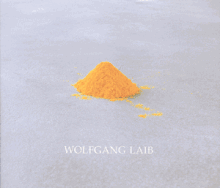 Wolfgang Laib: Somewhere Else
Wolfgang Laib: Somewhere Else
Published by Cantz.
Artwork by Wolfgang Laib. Contributions by Guy Tossato.
PUBLISHER
Cantz
BOOK FORMAT
Hardcover, 11.2 x 9.75 in. / 104 pgs / 45 color / 2 bw
PUBLISHING STATUS
Pub Date 4/2/2000
Out of print
DISTRIBUTION
D.A.P. Exclusive
Catalog: FALL 1999
PRODUCT DETAILS
ISBN 9783893229789 TRADE
List Price: $39.95 CAD $50.00
AVAILABILITY
Not available
STATUS: Out of print | 4/23/2003 For assistance locating a copy, please see our list of recommended out of print specialists |
PUBLISHER
Cantz
BOOK FORMAT
Paperback, 6 x 7.75 in. / 64 pgs / 28 color / illustrated throughout
PUBLISHING STATUS
Pub Date 1/2/1997
Out of print
DISTRIBUTION
D.A.P. Exclusive
Catalog: SPRING 1997
PRODUCT DETAILS
ISBN 9783893223152 TRADE
List Price: $14.95 CAD $17.50
AVAILABILITY
Not available
STATUS: Out of print | 4/23/2003 For assistance locating a copy, please see our list of recommended out of print specialists |
